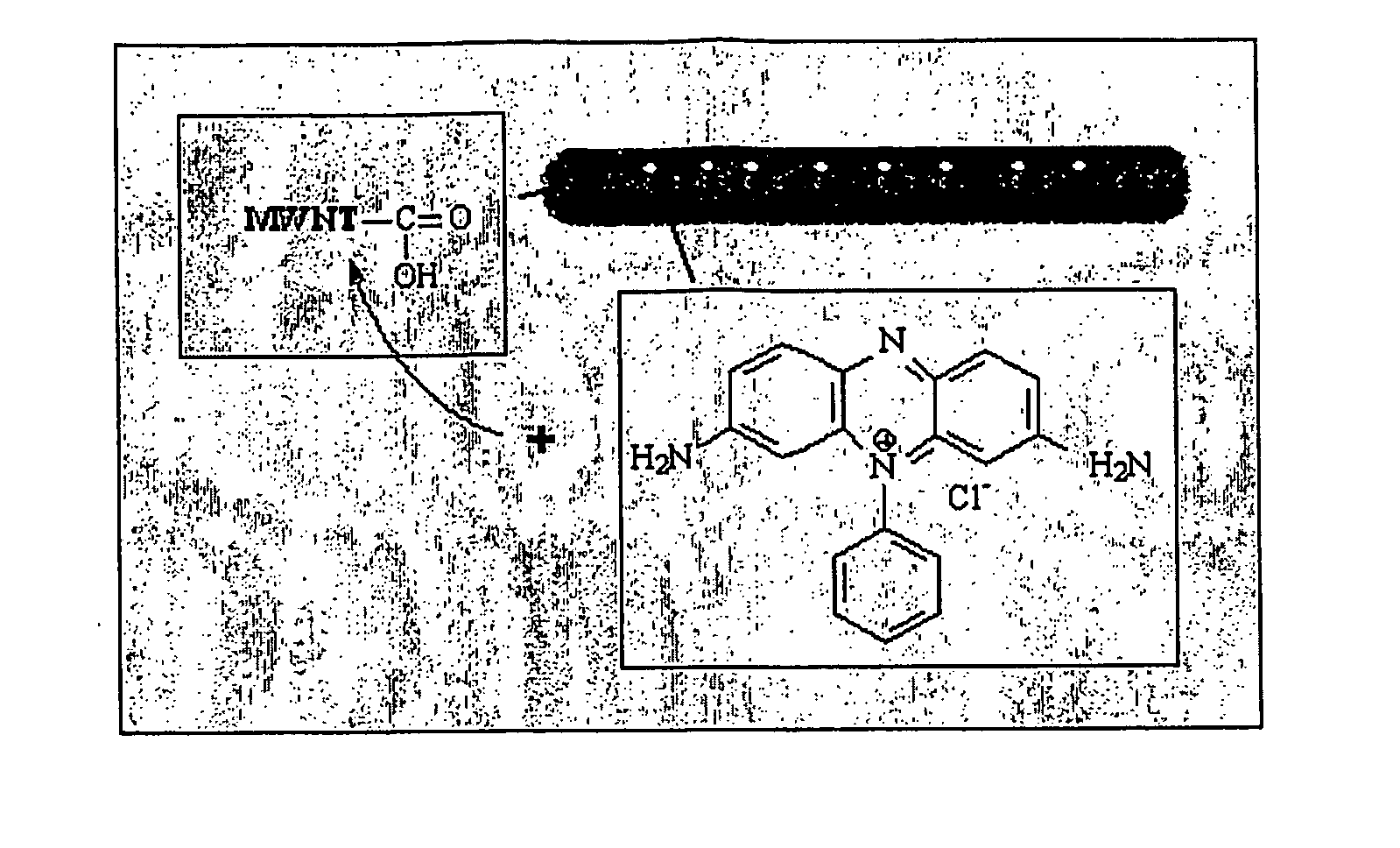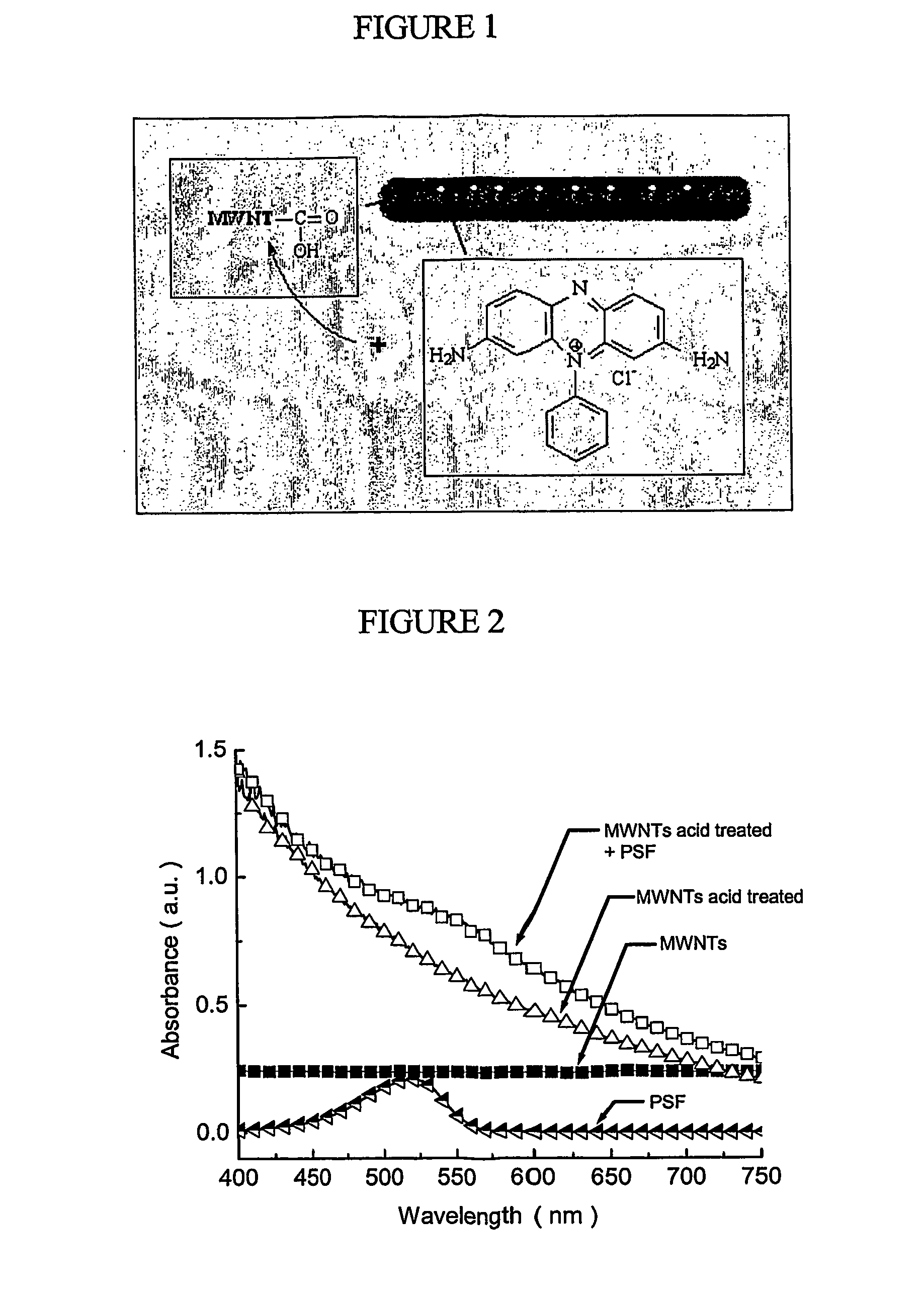Nanotube-organic photoelectric conversion device and methods of making same
a conversion device and organic technology, applied in the field of organic organic photoelectric conversion devices, can solve the problems of large volume of panels, limited general use, and inability to meet the requirements of the application
- Summary
- Abstract
- Description
- Claims
- Application Information
AI Technical Summary
Problems solved by technology
Method used
Image
Examples
first embodiment
[0022] In a preferred aspect of the first embodiment, a cationic phenazine dye, phenosafranin (PSF), is used. However, any other suitable dye may be attached to the nanotubes in a similar fashion. PSF is advantageous because phenazine dyes have great potential for use in solar cells. For example, PSF coupled with EDTA generates photovoltages of about 600 mV. In addition, PSF can undergo reversible reduction with long-lived excited states which make it a good photosensitizer in energy and electron transfer reactions. The amine functionalities make PSF suitable for dispersion in Nylon 6 or other similar polymer matrices, since the amine functionalities may be incorporated into Nylon 6 polymer backbone.
[0023] The following specific but non-limiting example of the method of the first embodiment is presented for illustration of the method. MWNTs synthesized by the arc-discharge method were first purified by sonication in concentrated 70 / 30 H2SO4 / HNO3 in an ultrasonic bath for 6 hours. Ot...
second embodiment
[0031] The anionic process of the invention involves the use of an ionizing agent or anionic initiator. An anionic initiator is any agent which can add to double bonds on the nanotube surface thereby generating anions (carbanions) on the surface of the nanotubes. Anionic initiators include, for example, metal organic initiators such as alkyl lithium compounds (salts), such as sec-butyllithium, as well as other alkali metal organic compounds, such as fluorenyl-sodium and cumyl-sodium. Radical ionic initiators such as sodium naphthalenide may also be used.
[0032] In one aspect of the second embodiment, anions that are formed on the surface of the nanotubes using the anionic process are subsequently quenched (i.e., protonated) with an alcohol (e.g., methanol or ethanol). The resulting nanotubes may be considered to be derivatized by virtue of the fact that the ionizing agent which has added to the nanotube double bond is still attached. When the anionic initiator used is an alkyl lithiu...
PUM
| Property | Measurement | Unit |
|---|---|---|
| photovoltages | aaaaa | aaaaa |
| length | aaaaa | aaaaa |
| organic | aaaaa | aaaaa |
Abstract
Description
Claims
Application Information
 Login to View More
Login to View More - R&D
- Intellectual Property
- Life Sciences
- Materials
- Tech Scout
- Unparalleled Data Quality
- Higher Quality Content
- 60% Fewer Hallucinations
Browse by: Latest US Patents, China's latest patents, Technical Efficacy Thesaurus, Application Domain, Technology Topic, Popular Technical Reports.
© 2025 PatSnap. All rights reserved.Legal|Privacy policy|Modern Slavery Act Transparency Statement|Sitemap|About US| Contact US: help@patsnap.com



